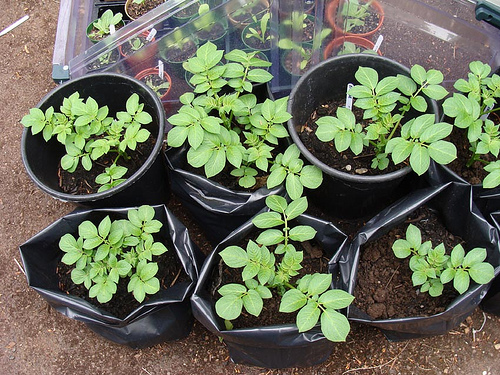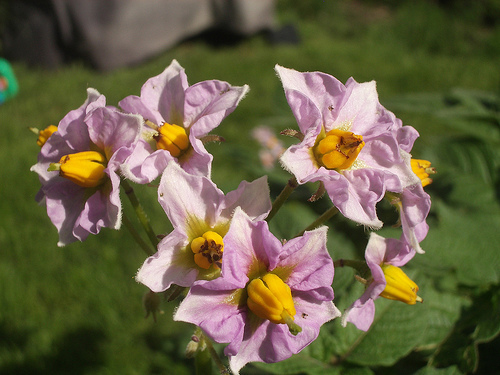How to Grow Your Own Potatoes
Harvest homegrown potatoes easily and inexpensively

For centuries potatoes have been a food staple in many countries due both to their nutritional value and their versatility in the kitchen. Growing potatoes (Solanum tuberosum) in your own backyard is healthy, inexpensive, and surprisingly easy. Plus, vegetable gardeners swear by the fresh flavor that only a homegrown crop can offer. A large space is unnecessary; a whopping 80 pounds of potatoes can be produced from just 10 square feet of garden space.
Potato pointers
Keep these tips in mind for a hearty potato crop:
- Use only certified disease-free seed potatoes. You can order these or buy them at a local nursery. Don’t use potatoes from the grocery store, as they are not certified disease-free.
- Potatoes like a compost-rich soil that’s well-drained and slightly acidic, as it reduces the chance of scab (a potato tuber disease).
- A soil amendment can be added if desired, but don’t add fresh manure, as it causes scabs. Use a compost or composted manure.

How to plant potatoes
Seed potatoes can be planted whole, or they can be cut into chunks called “sets.” Potato sets need to have two or three eyes on them. Let the sets air out for a day or two so that the cut areas dry out a bit before planting. Sets need to be placed “cut side down” into the ground.
Potatoes should be planted in full sun 3 to 5 inches deep, about 6 to 10 inches apart, in rows that are 3 feet apart. As the plants grow, “hill” (pile) soil, leaves, straw, or compost over them to keep the tubers covered so that they are not exposed to the sun. (When the tubers are exposed to the sun, the potatoes turn green and may develop solanine, a slightly toxic alkaloid.) To encourage tuber growth, leave a little bit of the plant sticking out of the hill.
For an early harvest, plant potatoes in the early spring. You can get a second harvest by planting sets again in mid-May to mid-June, and if you live in a mild climate, a third planting can be done in the fall for a spring harvest.

Proven potato cultivars
- ‘Gold Rush’ is a great baking potato.
- ‘Norgold’s Russet’ is good for baking.
- ‘Red LaSoda’ is good for warm climates.
- ‘Kennebec’ is flavorful and stores well.
- ‘Yellow Finn’ has a buttery taste and is great for baking.
- ‘Yukon Gold’ is large and flavorful.
- ‘Red Sun’ is smooth and full of flavor.
Harvesting potatoes
When potato plants begin to blossom, stop hilling the soil over the tubers. You can add some mulch to help retain moisture and keep the crop watered. For the best flavor, harvest the potatoes when they’re young (while the plants are flowering).
When the tops of the plants die, mature potatoes are ready to harvest. If you leave the mature ones underground for a couple of weeks, their skins will “set” and they’ll store longer. This is one harvest that’s best left to the kids in your home or neighborhood; they will have a blast searching for the “buried treasure.”






Comments
Log in or create an account to post a comment.
Sign up Log in